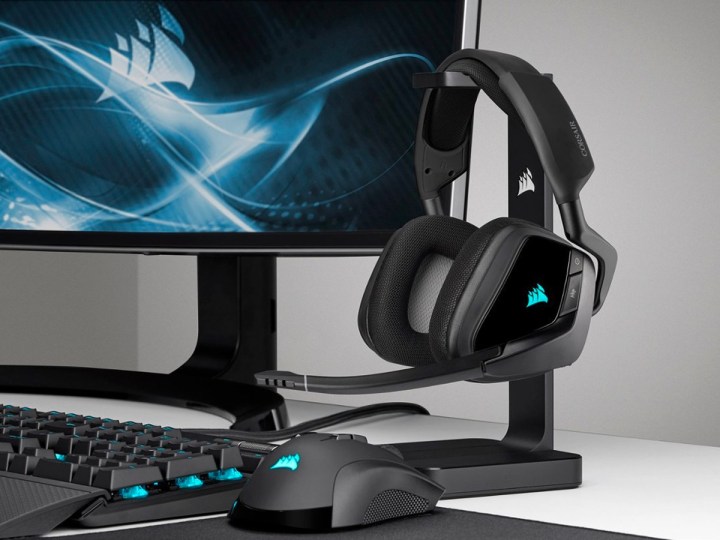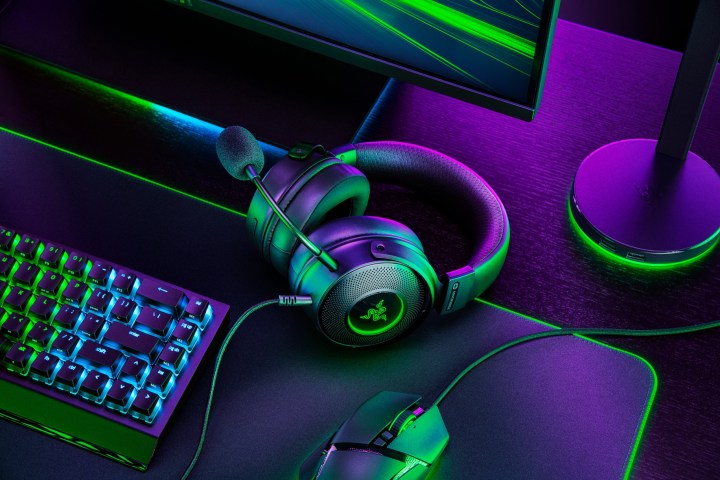As a gamer who often plays online, a gaming headset has always seemed like a necessity for me. After all, I don’t just need speakers or headphones — I need the whole package, meaning headphones and a microphone. Given the amount of gaming headsets on the market, you’d think it’d be easy to find a good pair of cans with a mic that works. Spoiler alert: It’s not.
I gave gaming headsets way too many chances and sank way too much money into them, only to be disappointed again and again. After trying three of the most popular options, I’m ready to say that I’m done. Here’s what happened.
Everything, all at once

There’s a problem with gaming headsets that’s not talked about enough, and it’s simultaneously the best thing about them: They do too many things at once, and that can impact the build quality. While this is to be expected, it’s only viable up to a certain point. Once you sacrifice too much just to get all of these features in a single package, it no longer makes much sense.
I’ll be the first to tell you that gaming headsets can be great if you’re like me and hate having to deal with annoying cables, plugging in multiple devices, keeping track of where everything is, and so on. They’re just easier to use than other options, but sadly, jamming all of that inside a headset comes at a price.
It’s not just headphones and a microphone. USB headsets come with their own onboard audio drivers, while those with a 3.5mm audio jack rely on your motherboard to deliver audio. Gaming headphones are often closed-back, meaning some level of noise cancellation. Then, there’s the unique gamer aesthetic and marketing that you need to pay a premium for. A lot of these headsets in the mainstream sector cost less than $100 to $150, and some of them dip below $50. When you add all of that up and still try to make a profit, it’s clear that cutting costs on build quality might happen.
Gaming headsets are the epitome of the phrase “jack-of-all-trades, master of none.” The rest of that saying is “but oftentimes better than a master of one,” but that isn’t always the case here. Gaming headsets can do all the things they’re advertised to do, but they also fall behind in many ways.
A headset gives you the worst out of either side, be it the mic or the audio, unless you’re prepared to pay for one of the best gaming headsets — and those can cost $200 to $300 and up. It might be decent for games, but the moment you want to chat on Discord or put on some music, the audio (or microphone) quality tends to fall flat. These headsets are also, in my own experience, susceptible to various issues, even when handled with care.
Buying a gaming headset also means paying the gamer tax that’s also present in peripherals like mice and keyboards. These headsets might be tailored to the needs of gamers, with features like surround sound, noise cancellation, or being able to mute your microphone with a press of a button. But for me, those features didn’t make up for the problems that cropped up.
I really tried

I really gave gaming headsets a proper chance. Over the last three years, I’ve tried a total of four, as well as one pair of non-gaming headphones. Out of all five, there’s only one model that I’m happy with, and it sure isn’t one of the headsets.
I started out with a Razer Kraken headset. I found it uncomfortable, and the microphone quality was pitiful. The pleather earpads started flaking really early on, too.
I eventually caved and bought a new headset, this time the wireless version of the HyperX Cloud Flight. I’d only heard good things about it, and while I liked it for the comfort of wear and decent sound quality, it had a couple of things that bothered me. For one, the volume control on the left headphone was very easy to trigger just by moving my arm or neck. As a result, I’d randomly have the volume slide all the way to the top or the bottom, because once it started, it wouldn’t stop. Needless to say, my ears were not happy.
What finally prompted me to return this headset after just a few months of use was the fact that the battery would die after 1 to 3 hours — and that’s on a full charge.

I got a new pair as a replacement. This marks headset number three, or two if we can count both the HyperX’s as the same device. Once I got my replacement, I hoped that all of these issues would have been resolved. However, the volume control remained trigger-happy, hurting my ears every so often. This headset also came with its own issue — it lost signal at random. It was time to move on.
Right now, I have a SteelSeries Arctis Nova 7, and I can’t say that I hate it. The microphone is the best out of all four. The headphones are reasonably comfortable, and while I definitely don’t find them great for music or movies, they were made for gaming. But, of course, there’s just one problem.
The headset won’t stop turning itself off at random, often in midsentence; for me, that’s a pretty major dealbreaker. It’s still under warranty, but I’m not even sure whether I want to get a new one at this point.
I’ve sworn off gaming headsets for good, and the alternate solution has been staring me in the face for many long months.
When two is better than one

Failed headset after failed headset, one pair of cans stayed consistent and excellent — my sub-$100 Audio-Technica ATH-AVA400 open-back headphones. They’re not even wireless, which I greatly prefer these days, but their quality makes up for that. I’m not an audiophile, so as long as something sounds good and doesn’t break unreasonably quickly, I’m satisfied. My ATH
I finally realized that the solution is simple, and it’s not to ditch the microphone. It’s to get a microphone in addition to a solid pair of headphones.
There are a few benefits from trading one device for two (or three, if you want to also get yourself a DAC/amp). For one, you’re getting two devices that were specifically made for that one purpose, be it to deliver audio or to transmit it. It might not sound like much, but that focus certainly makes all the difference compared to a combined gaming headset.
Next, you’re most likely getting something better for roughly the same price. Much like with gaming headsets, you can mix and match to get something cheaper or pricier, but this is generally true across many price different price points. If you’re on a budget, you can most likely “build” a combo for under $80. Cheaper gaming headsets do exist, but they’re usually not much to write home about.
When it comes to headphones without a microphone, we have a ranking of some of the best headphones that are worth looking at. You’ll find that the brands in our ranking differ from what gamers are used to. You’ll find Sony, Bose, Sennheiser, and more. I personally truly recommend Audi0-Technica as a fairly affordable option. It also makes some gaming headsets like the ATH-GDL3, but again — it’s often better to break those two things up.

What about microphones? You don’t need one of those massive streamer-esque boom mics that attach to the desk, although they’re an option. The closest alternative to a headset is the pricey, but solid Antlion ModMic. The wired options start at around , and there’s a wireless version for . This is essentially an attachable microphone that you can combine with any pair of headphones to create your own gaming headset. It sounds leagues better than any headset I’ve owned, and it can go with you once you switch out your headphones for a new pair. If the price tag puts you off, the Zalman ZM-MIC1 is just , and while it’s not outstanding, it’ll do.
Then, there are microphones like the recent SteelSeries Alias Pro or the famous Blue Yeti. Those are probably as good as it gets without additional audio hardware, but they take up room on your desk, so it’s a trade-off. Be wary that once you fall down the rabbit hole of upgrading your headphones and microphone, you might end up spending way more than you initially planned.
Your mileage may vary, and this is just my personal experience, so if you’re in the market for a headset, don’t be swayed by my opinion. Excellent gaming headsets that don’t cost an arm and a leg do exist, such as the HyperX Cloud Alpha. With a bit of research, you’re bound to find something that suits your needs if you like the concept of gaming headsets — especially if you’re willing to fork out some extra cash. I just know that for me, I found myself far more satisfied once I gave up the idea of headsets altogether.
Editors' Recommendations
- HyperX just made your next favorite gaming keyboard
- The new SteelSeries Arctis Nova 7 headset brings hi-fi audio under $200
- Razer’s new Kraken V3 headset might give you a headache (in a good way)
- The new Razer Kraken X is a $50 gaming headset with 7.1 surround sound




